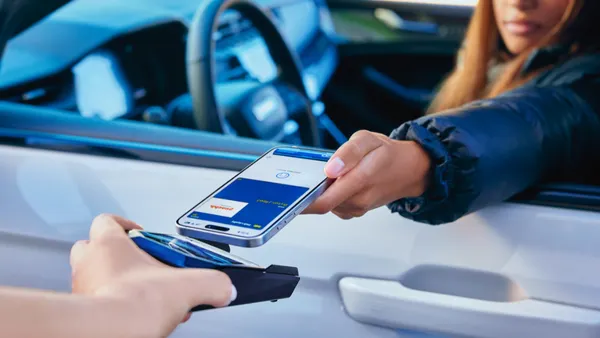Dive Brief:
- Yelp has rolled out a new health alerts feature in Chicago and Los Angeles that flags restaurants with the worst health inspection violations. The review site piloted the feature in San Francisco beginning in 2015, according to the Chicago Tribune.
- In these markets, a pop-up message alerts Yelp users to a bad health score if they scroll to a restaurant's review page.
- Yelp rolled its health scores out nationally in 2018 as part of restaurant reviews. The company plans for a broader launch of its next-iteration pop-up alerts following the Chicago and Los Angeles tests.
Dive Insight:
This feature augments the restaurants' health score displays that already exist on Yelp's platform as part of its LIVES program, a new open data standard that stands for "Local Inspector Value-entry Specification," a feature that was added in 2013 and now exists in more than 30 states.
The difference is this update actually draws attention to the violations via a pop-up alert when a consumer is in the Yelp space and ready to make a dining decision. This can be an effective method to disseminate information as most consumers now prefer information be pushed to them when they're using their mobile phones.
For Yelp, the objective seems black and white — to motivate restaurants, specifically those with the lowest 1% of scores, to prioritize their health safety scores. As Yelp told Nation's Restaurant News, "When restaurant scores are posted conspicuously, best practices improve across the industry." There's plenty of reason for this. Foodborne illnesses affect about 48 million people in the U.S. each year, leading to 128,000 hospitalizations and 3,000 deaths, according to the Centers for Disease Control and Prevention.
The San Francisco pilot showed both a consumer deterrence and a prompt correction from restaurants. Research from Harvard Business School and reported by the Chicago Tribune shows that the addition of health scores to restaurant review pages led to a 13% decrease in purchase intentions. The addition of pop-up alerts led to an additional 7% drop, as well as an 11% decrease in restaurant reviews.
Information in the alert includes the inspection date and violations, such as not having adequate hand-washing sinks. The system is updated daily, providing an opportunity for second chances. According to that same Harvard research, restaurants that were flagged for a pop-up in the pilot were more likely than other restaurants not to be flagged again six months later.
One potential concern is the data aggregation, which is done via a third-party company that "scrapes websites" for this information and calculates a score. Typically, health inspectors physically visit stores unannounced, perhaps a far more trustworthy approach for consumers, at least. For restaurants, however, that hasn't always been the case, as some have been stuck with a low health grade due to computer glitches.
It's also worth noting that Yelp isn't necessarily the first company to focus on improving food safety. Tech startup HDScores, which partners with Yelp to provide the health scores, launched its own subscription application last year allowing users to view health ratings for over 1 million businesses, including restaurants, coffee shops and drive-thrus.U.K.-based Just Eat also rolled out a nationwide food safety improvement program last year for its takeaway sector, with a goal of raising hygiene and safety standards. A restaurant with a low hygiene rating is removed from the platform.








